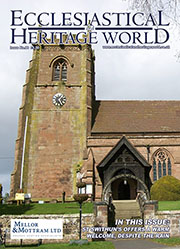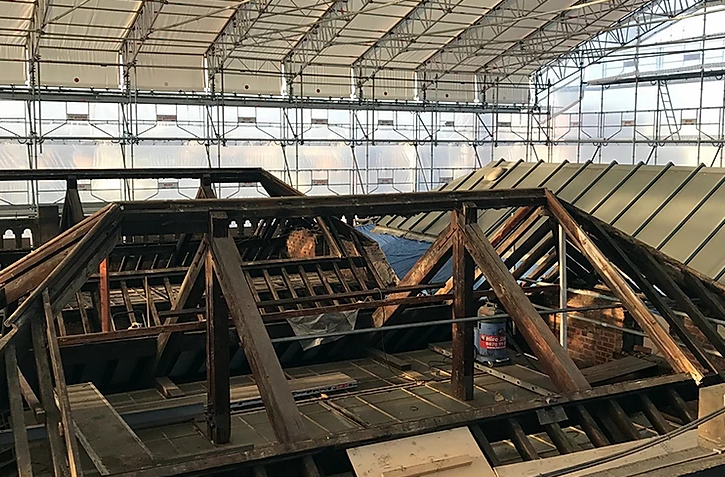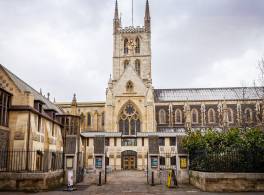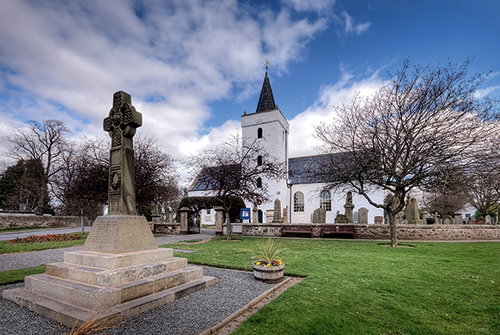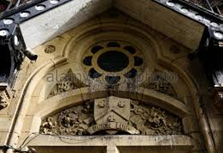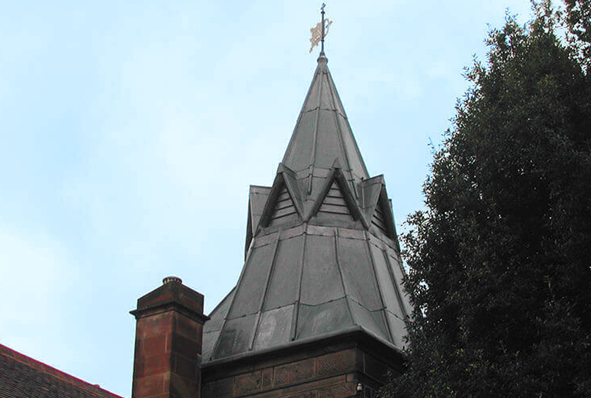Heritage Roofing
Heritage roofing - maintaining our iconic buildings
The UK is home to some of the most iconic buildings in the world, from stunning churches and cathedrals to historic stately homes. Each and every one of these remarkable feats of architecture requires regular maintenance to ensure they remain in the very best condition, allowing them to be enjoyed for generations.
Cathedral Care
Restoration and upkeep of cathedrals
There are some 42 Anglican cathedrals in the UK, not to mention 20 or so Catholic cathedrals. Cathedrals form the most important collection of historic buildings in England. The largest and most ancient are internationally famous, the smallest are usually among the most significant buildings in their region and even the most recent are architectural masterpieces.
Master Craftsmen
Championing our heritage with modern craftsmanship
Twenty years ago, English Heritage (now Historic England) published its first-ever Register of Buildings at Risk across England, which featured nearly 2,000 buildings and monuments that were ‘neglected, broken and unloved’. Recently Historic England was delighted to announce that over two-thirds of those buildings were now safe, in both urban and rural areas right across the country.
Traditional Lime
Lime: it’s better for buildings – and for the environment
It is now fairly well known that cement is not good for old buildings and that lime mortar should be used. But why? What are the advantages and what are the disadvantages? In order to begin to answer those questions it is necessary to understand the nature of traditional building, the process by which buildings used to be built, and how it differs from modern construction, the process by which we build today.
Audio Visual
Audio visual equipment in church buildings
This guidance is issued by the Church Buildings Council under section 55(1)(d) of the Dioceses, Mission and Pastoral Measure 2007. As it is statutory guidance, it must be considered with great care. The standards of good practice set out in the guidance should not be departed from unless the departure is justified by reasons that are spelled out clearly, logically and convincingly.
Read More...
CRE Events
After the Midlands, onward to Milton Keynes
"CRE Midlands reminded me of the giddy days when it first began – the venue was packed with exhibitors and visitors and there was a busy atmosphere. The whole thing looked great."
Insurance
You need to ensure that reasonable precautions are in place at your church to keep it safe for those who use it. To do this, you need to think about what might cause harm to people.
You will then need to decide if the precautions already in place are adequate. If they are not, you may need to identify further action to prevent any danger. When done formally, this is known as a risk assessment.
Church Maintenance
Church maintenance and repair: Calendar of Care
Just as prevention is always better than cure, maintenance is preferable to major repairs. But, such repairs may not always be avoidable. Church Care offers a monthly guide in our coming issues Starting in Spring
We can help you understand the common problems and areas that need your special attention, and give you tips for regular maintenance schemes.
Pest Control
Michael Palin warns of pest threat to churches
Michael Palin is supporting the future of the UK’s historic churches and chapels with a voiceover for a new animated film. The 80 second animation, produced for the National Churches Trust, highlights why churches are some of the nation’s best loved buildings.
Town Halls
The history of the great Victorian Town Halls of Northern England
From industrial squalor to civic pride, the story behind some of the most impressive buildings of the North involve a unique mix of economics, grand designs and noble sentiments within communities.
Lead Roofing
Lead is one of the oldest materials in the roofing industry and is still commonly used throughout the world today.
Lead roofing is a traditional roofing method which has been used in the industry for hundreds of years, and is therefore proven to be extremely reliable. Lead roofing, and sand-cast lead, in particular is ideal for old buildings such as churches or historical renovations, whereas milled lead roofing is a mass-produced alternative, used for precision and accuracy in homes and commercial buildings alike.
Lightning Protection
When lightning strikes are you protected against this act of God?
The issue of lightning protection in churches is one that has exercised this publication for many years. In this four-part series of spotlights on the issue we will be revisiting various aspects of the subject, beginning with an overview of current thinking.
SEARCH OUR DIRECTORY
New tiles for old at Keble
An enlightened and practical approach to the restoration of a Grade One-listed building was evident in the project at Keble College Hall in Oxford.
| Founded in 1870, Keble College is an outstanding example of Victorian Gothic and is built to the design of William Butterfield (1814-1900). The hall has been in constant use ever since, with over 500 meals currently served per day, 350 days of the year. After more than 130 years of heavy foot traffic from students, academics and visitors the original Minton tile and oak board floor was literally crumbling away. Major restoration commenced as part of an estimated £1.5m project to restore the entire hall being carried out by Beard Construction. For specialist period tile producer Craven Dunnill Jackfield the key challenge was to make 4,500 replacement tiles, perfectly colour matched to the remaining originals in non-standard dimensions. There was considerable discussion with the conservationists as to whether the floor should be reconstructed using original materials – including the troublesome lime mortar – or whether the original look could be achieved using more modern and enduring materials. Edith Golnast, Oxford City Council’s conservation officer, was convinced of the benefits of using modern materials, so the floor was stiffened using plywood and a synthetic mat on which the tiles were fixed using modern, flexible adhesives. Permission was granted to replace the encaustic tiles with hand-made, dust-pressed versions, ensuring continuous colour throughout the 20mm thickness. Craven Dunnill Jackfield then had to master the process of hand-dust pressing, having never undertaken it before. The restoration of the floor is being phased to accommodate its continued daily use. The first phase was recently completed and to mark the occasion a celebration college supper was hosted by Bursar Roger Boden and Domestic Bursar Janet Betts for all the specialists involved. Janet’s enthusiasm and passion for the project is matched by her admiration for the craftsmen at Craven Dunnill Jackfield and the fixing company Mosaic Restoration. The Hall is the longest college hall in Oxford, measuring 38m x 11m, and stands 12m high with a trussed roof and panelled ceiling. The internal walls feature the striking polychromatic brickwork, for which Butterfield and Keble College is renowned, interspersed with stone, marble pillars, and oak panelling. The floor is tiled and inset with polished oak on which the oak dining tables stretch the length of the room (pictured). The main signs of deterioration are the lime mortar, in which the tiles were originally set and which has broken up, and many of the original encaustic tiles, which have lost their colour and become uneven. Refurbishing the floor is proving to be a journey of discovery for Janet Betts and consultant architect David Yandell of Feilden and Mawson, as prior to starting the project there was no record of how the floor was constructed.
|











